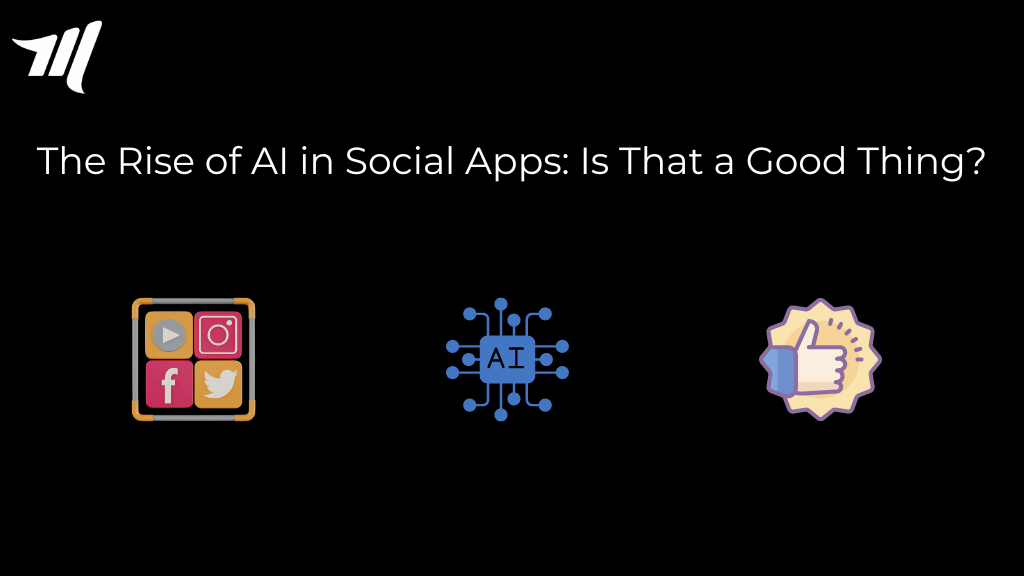The most recent advances in generative AI have opened up many new possibilities and possible applications. But are we sure that they provide value to social media apps?
Sure, there are some useful, practical use cases, such as modifying images for ad backgrounds and crafting optimized ad content for various purposes.
But, for everyday users, does generative AI improve the social app experience?
For years, people have complained about spam messages in their DMs, spam comments that lead to trash websites, and phony interaction encouraged by, say, anniversary and birthday announcements. These posts appear dishonest, and unengaging and provide little value to the “social” experience.
However, with Gen AI, social applications are attempting to make this even more visible, with practically every platform currently experimenting with various types of automated content production, which can then be used as updates that people may publish to their accounts, simulating genuine participation.
Is this a good thing?
To provide a viewpoint, here’s a summary of the present status of generative AI inside the biggest social apps:
- Facebook offers an AI post-creation tool, generative AI text and image creation for advertisements, celebrity-themed AI chatbots, an AI assistant in Messenger, generative AI stickers, an AI chatbot helper in Ray Ban Stories, and generative AI profile images.
- Instagram offers generative AI picture filters and background generation capabilities, as well as AI creation and editing possibilities, and is also testing a conversational AI chatbot for direct messages.
- LinkedIn’s Recruiter and ad choices include an AI post composer, an AI assistant for InMails, AI article summaries, generative AI tools that can build your profile for you, and job advertisement ideas, among other features.
- Snapchat offers its “My AI” conversational chatbot, as well as its “Dreams” picture-generating tool, AI-generated Snap captions (for paid members), and “AI Mode” to create generative AI Snaps.
- TikTok features AI profile photos, AI effects capabilities, and AI song production, and it is also experimenting with AI-powered conversational search, text-to-video generation, and an integrated chatbot experience.
- Elon Musk, the owner of X, claims the company’s “Grok” AI chatbot will soon be able to produce in-app updates for you, and they’re also looking into visual generation using the tool.
The majority of these tools are intended to replicate human updating and provide unrealistic visuals and depictions. And there are currently many of these alternatives accessible, whether deliberate or not, that effectively decrease, if not eliminate, human intervention in the process.
Why would anybody want that? Why would anyone want to upload robot comments and try to pass them off as their ideas and opinions?
Even if producers see value there, what about the end users of such updates?
Spammers and scammers will undoubtedly love it, and engagement farmers will be eager to “optimize” their posts using these techniques. But are they the kinds of postings that improve social media interaction?
Of course, it appears to be an afterthought, as you can now make a profile image of yourself as an 18th-century warrior. Isn’t it cool?
That is certainly fascinating as a novelty. But how many generative AI photos can you produce of yourself in different situations before it comes to you that you aren’t performing any of these things?
By definition, social media is “social,” meaning that individuals engage with other humans, and share their own experiences, and the things that are passing through their real human brains, to feel more connected to the world around them. That has been the medium’s universal value, building on books and films to foster greater understanding and connection, so we may all feel less alone and more involved with the world around us.
How can bot updates assist with this?
And, of course, things will only get worse from here.
Indeed, LinkedIn said this week that it is re-building its foundations on AI to drive “the next ten years of product development and innovation.” This implies increased AI integration and bot-generated content. And, to remain relevant, these tools will continue to iterate on the newest trends while simultaneously training on an increasing number of AI-generated updates viewing through their circuits.
This means that AI tools will slowly be driven by AI replies, removing more and more human input from the process with each update.
With each integration, the “social” part becomes more mechanized, stale, and less human.
Of course, the opposition is that individuals can already use AI tools outside of social networks, thus whether integrated or not, they will be used for the same reason. This is somewhat true, but adding them in-stream, allowing users to just hit a button to make a response, appears to be a step in the wrong direction in either case.
This is not to argue that Gen AI tools aren’t valuable. As previously stated, there are practical applications for optimized, streamlined instruments that can augment human creativity.
However, removing people from the source code is not an effective way to value.
And, whether we realize it or not, the Gen AI revolution is about to take even more dramatic twists.





